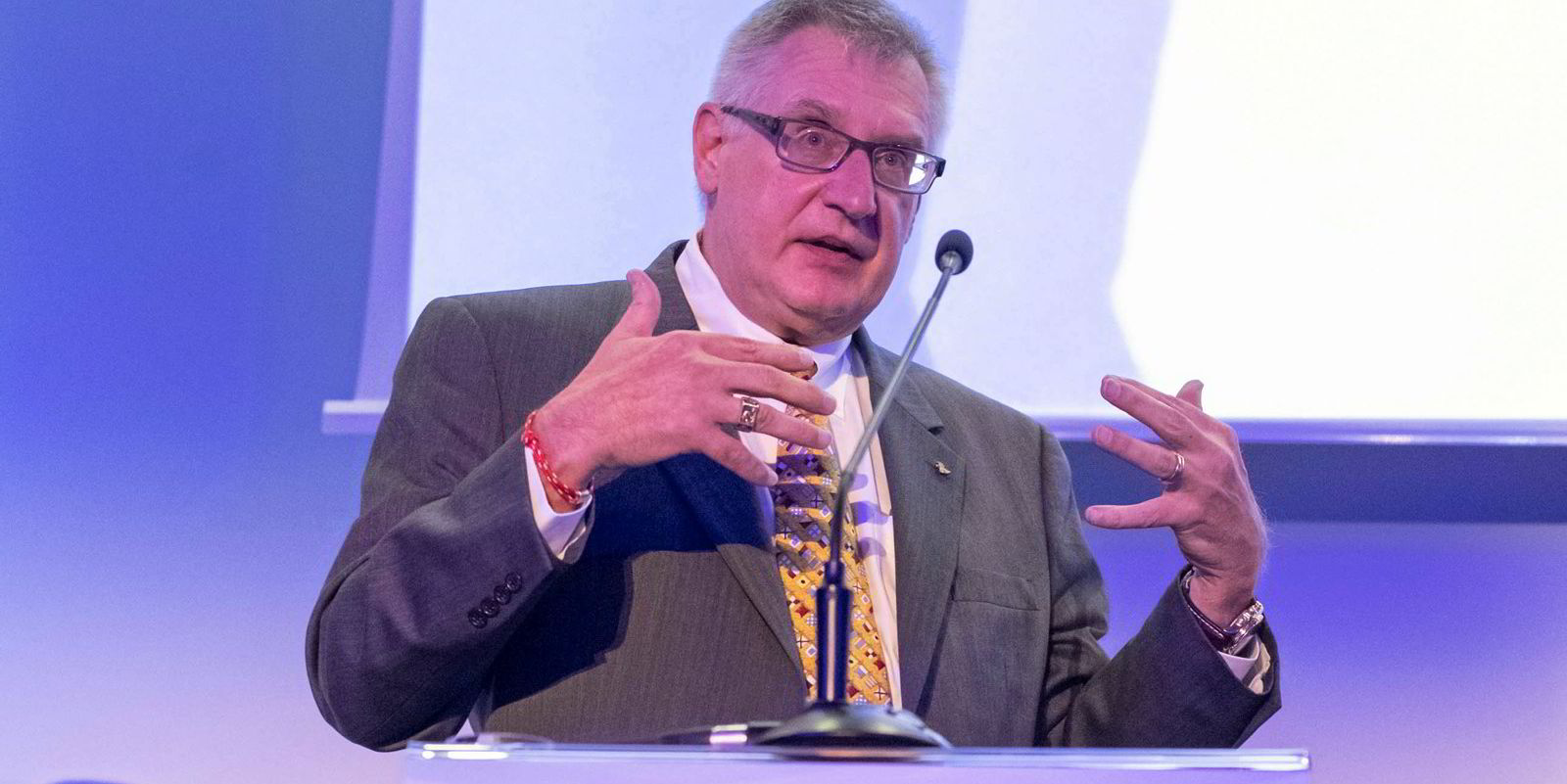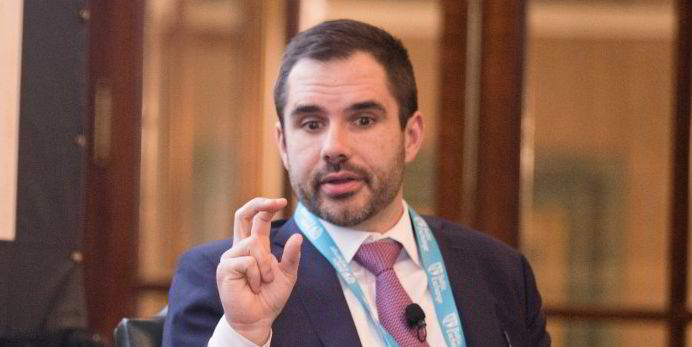As all eyes turn to Dubai for COP28, the magnitude of the clean energy shipping challenge before us is daunting. But you can pretty much boil it down to our ability to drive down costs and drive up efficiencies in two critical technologies: electrolysers and carbon capture.
Ultimately, our ability to harness clean energy to split water into oxygen and green hydrogen via electrolysis at scale, and to efficiently trap CO2 from fossil fuel emissions and produce blue hydrogen via carbon capture technology are going to be the defining challenges.
The latest American Bureau of Shipping research demonstrates that we can get to net zero by 2050. Simply put, for shipping’s CO2 emissions to reach net zero, we will need to harness the potential of energy efficiency improvement technologies to reduce aggregate fuel consumption by 15% on the existing fleet and new vessels.
At the same time, we will need carbon capture rolled out across much of the oil-burning fleet, reducing onboard CO2 emissions by 70%. Those that do not or cannot adopt carbon capture will need to switch to e-diesel or zero-carbon biofuels.
The International Maritime Organization’s Marine Environment Protection Committee has redrawn the compliance performance of most alternative fuels by moving from tank-to-wake to well-to-wake, introducing the activities and complexities of an entire supply chain to emissions calculations.
And that is just the beginning. Consider all the new players now affecting shipping, with new relationships, technologies, boundary conditions and operational strategies combining to disrupt and utterly transform the industry.
Looking down the road to 2050, it is clear to me that shipping will move to a multi-dimensional world, in which fuels, technology and data must unite to provide the hybrid solutions required to achieve net zero.
Our industry conversation is focused on what is happening in the internal combustion engine. Yet I would argue that is the least of the challenges presented by shipping’s clean energy transition. The technology needed for the transition is largely on schedule for delivery, such as ammonia-burning engines next year, or is already in hand.
Availability of fuels
The shift in newbuilding from conventional vessels to ones capable of alternative fuel operations is highly advanced in some sectors — with containerships, car carriers and bulkers leading the way. Investment in some technologies, particularly methanol engines, is so rapid that the challenge is the availability of fuels rather than engine technology.
Arguably, the decarbonisation of shipping is increasingly a question of the ability of alternative fuel providers to deliver green products at affordable prices — and it is here that electrolyser costs are going to be key.
We are in a global race to drive down costs to produce green and blue variants of alternative fuels to address the boundary conditions of availability and scalability of both fuel and infrastructure. This is where governments need to step in with alternative fuel technology development programmes. Only they have the resources to make this happen.
Without swift progress here, everything else is in effect on pause. If we can’t reduce the cost of the electrolyser quickly enough, then carbon capture’s potential to generate blue hydrogen — in which carbon generated from steam reforming is captured and stored — becomes a transitional stage for the industry as it moves from grey to green variants.
We can’t build enough ships to magically replace the global fleet, so retrofitted carbon capture is going to take centre stage, along with energy efficiency technologies, because whatever you are burning, efficiency is always going to be the best fuel.
However, while technically possible, it is kinetically challenging. To illustrate the steepness of the gradient of the curve in front of us, we need to understand the calculus to get us to net zero by 2050.
Bigger picture
We will need 70% zero-carbon e-fuels, which will require 10 times more renewable energy than is currently produced and 30% carbon-neutral fuels that will require 100 times more carbon capture than we have today … that’s if we are to achieve net zero across the board.
So, the real action is far beyond the engine. We need to consider the bigger picture. Our attention now must turn to the new boundary conditions of safety, availability and scalability of fuels and infrastructure. Of those three, shipping has only partial input into one: safety.
The rest is outside our control, so we will need governments to play their part. Shipping cannot get there on its own. This is the challenge, and this is where we need to focus the discussion in Dubai.
Christopher Wiernicki is chairman and chief executive of the American Bureau of Shipping.





